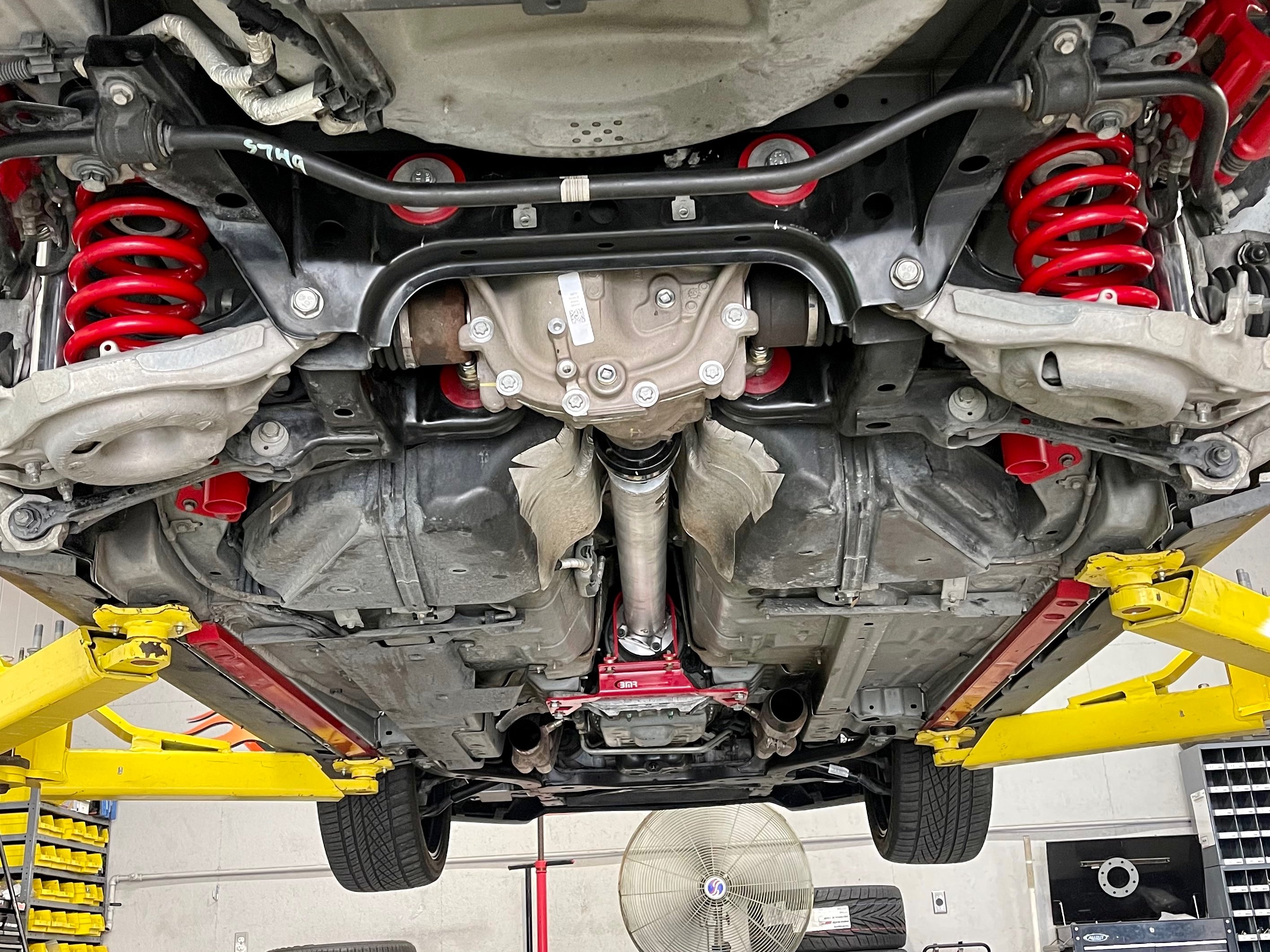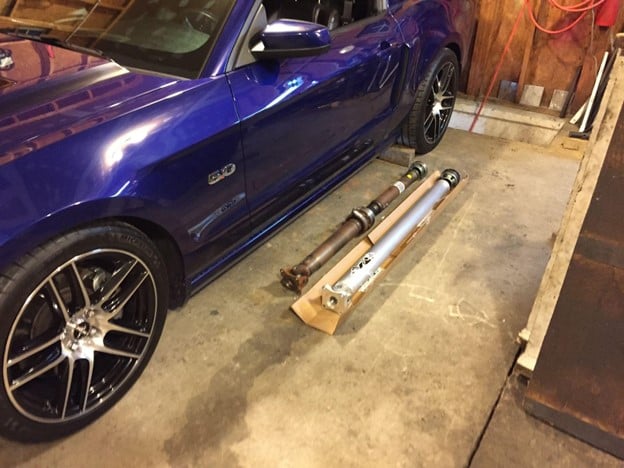
How To Balance a Ford Mustang Driveshaft

Imagine the sinking feeling when you’re driving a car that’s badly vibrating when you’re cruising down the road at a good clip. A vibrating car is jarring and unnerving and can make you feel unsafe. It can also be quite uncomfortable and make you feel like you have less control of the vehicle. And if you’re driving a Ford Mustang, you’re probably pretty invested in getting top performance out of your car. Needless to say, you can’t really do that if your vehicle is vibrating, especially at top speeds, so it’s something you’re going to want to get sorted out.
If your vehicle is vibrating, especially at higher speeds, there’s a chance that it’s due to a Mustang driveshaft that isn’t properly balanced. If the driveshaft isn’t correctly balanced, then the power will not be correctly transmitted, and your Mustang will vibrate quite a bit when driving. The vibrations will get notably more severe as you drive at higher speeds. Thankfully, there’s a straightforward fix to a driveshaft that isn’t properly balanced: balancing it. That should fix the vibration issues, while also giving your Mustang better performance.
Making Sure the Driveshaft Is the Issue

Before you get to balancing your driveshaft, determine that the driveshaft is actually the issue that is causing vibrations in your Mustang. There are a lot of different reasons that a vehicle will vibrate when you’re driving, and most of them are more common than a driveshaft that isn’t correctly balanced. Usually when a car is vibrating, it’s because of an issue with the wheels or tires. This could be due to uneven wear and tear, excessive wear and tear, general balding, damage, or lumps. It could also be due to wheels that haven’t properly been aligned, or you’re due for an alignment, or even tires that are underinflated or overinflated.
Mustang brakes that are warping will cause vibrations, though usually only when you’re applying the brake pedal. Worn out shocks and other suspension components can cause notable vibrations, and of course, an issue with an engine or transmission mount – or the engine or transmission itself – can also be the culprit. Even something as simple as a broken radiator fan can cause your Mustang to vibrate on the road. So before jumping into the driveshaft, make sure that it’s actually the problem that you’re dealing with.
Balance vs. Replacement
Whenever a part of your car isn’t performing properly, you have to decide whether to repair it or replace it. That’s especially important when your driveshaft isn’t functioning correctly. If your Mustang driveshaft is at all damaged, then you won’t be able to properly balance it. A bent or dented driveshaft needs to be completely replaced. So before balancing your driveshaft, make sure that it’s actually in good condition, otherwise you’ll be wasting your time. If your driveshaft is at all damaged more than a little ding, then skip the balancing and simply replace it.
Balancing Your Mustang Driveshaft
If you’ve determined that your driveshaft is causing your car’s vibrations, and it isn’t damaged, then it’s time to balance it. There are two ways to balance your driveshaft and get your Mustang back to driving smoothly again.
Take It to a Mechanic
It might sound obvious, but the best way to balance your driveshaft is to let a professional do it. Balancing a Mustang’s driveshaft is not an easy task, and it requires a lot of experience working on cars. It also requires having expert knowledge of your car’s setup, or a lot of time for trial and error.
For instance, on many Mustangs, the driveshaft is strategically imbalanced, which helps offset the imbalance of the flange. In this case, balancing the driveshaft can create the effect of imbalance. For that, and many other reasons, it’s usually best to have your driveshaft balanced by a mechanic.
Balance It Yourself
If you want to balance your Mustang’s driveshaft yourself, you should start by removing it from the vehicle. When you do this, make sure that all of the parts stay connected and undamaged, and the driveshaft remains entirely intact. The best way to balance the driveshaft is to place it on a balancing machine, which will tell you what corrections need to be made. Like balancing a wheel, weights are added to very particular spots around its circumference. You can then make those adjustments, reinstall the driveshaft, and you’re good to go. It isn’t necessary to use a balancing machine, but it’s basically trial and error without one. You’ll need to make slight adjustments to the driveshaft positioning, then drive your car and take note of the vibrations. Continue doing that until you’re pleased with the results.
If you think it’s time to purchase a new driveshaft for your Mustang, or you have any additional questions about driveshaft balancing, our sales techs are standing by to help you out. We’ll have your car back on the road and running like new in no time at all.